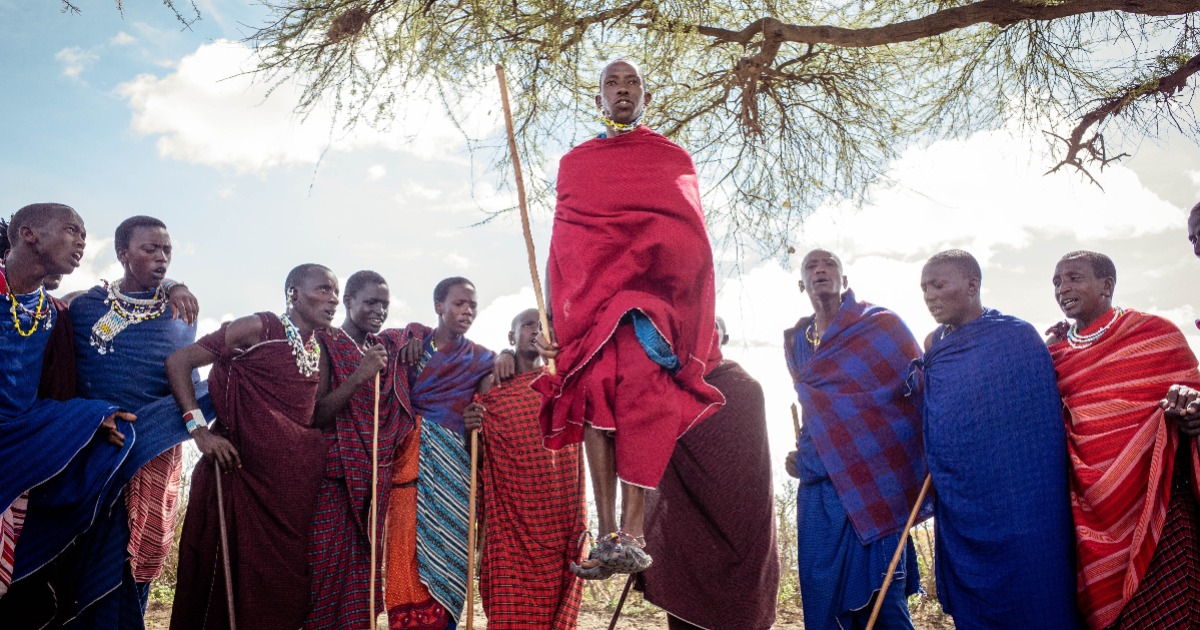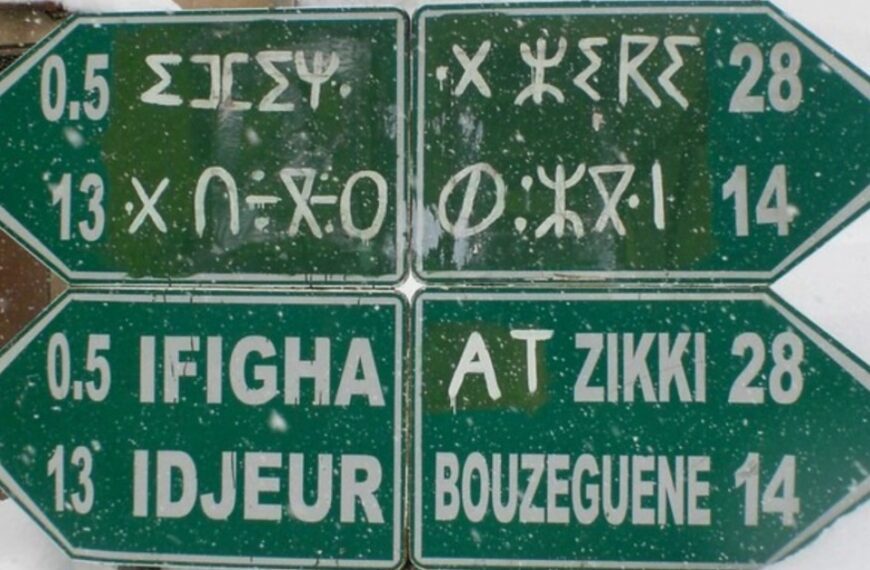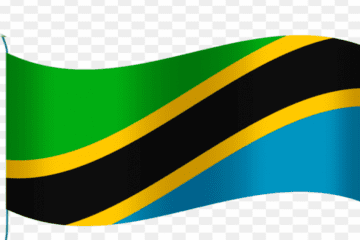Tanzania culture and traditions diverse yet mainly homogenous civilization rich in age-old customs. The locals are well-known for being kind and respectful to guests, and there is a strong feeling of national pride that pervades the country. With over 120 ethnic groups and religious beliefs in Tanzania, it might be difficult for tourists to distinguish between good and poor manners. Culture Tour elaborates on several commonly held local traditions and practices to assist visitors maintain proper social manners.
1: Swahili language
Tanzania’s national language, Swahili, is spoken by the majority of the people. Swahili, also known as Kiswahili, is a Bantu language that is extensively spoken in East Africa.
Swahili is the language of teaching in Tanzanian schools and institutions, as well as the language of government and official communications. It is also the main language of trade and business, as well as the media and entertainment sectors.
Despite the fact that Swahili has several regional dialects, the standard Swahili spoken in Tanzania is based on the dialect spoken in Zanzibar, an archipelago off the coast of Tanzania.
Studying Swahili is strongly advised for individuals wishing to travel or work in Tanzania, as it may substantially improve one’s ability to interact and connect with the local people and culture. Moreover, with a rich history and numerous cultural influences, Swahili is a pleasant and engaging language to learn.
Check out Tanzanian Language: Everything You Need to Know.
2: Music and dance
Tanzanian culture is rich in music and dance, with a long history and different influences from the country’s numerous ethnic groups. Following are some examples of Tanzanian music and dance:
Taarab:
Taarab music is popular in Tanzania, notably in Zanzibar. It combines Arabic, Indian, and African elements and is often accompanied by traditional instruments like as the oud, qanun, and violin.
Flava Bongo:
Bongo Flava is a Tanzanian music genre that became popular in the 1990s. It is distinguished by a fusion of hip hop, R&B, and indigenous Tanzanian music, and is often performed in Swahili.
Ngoma:
Ngoma is a traditional Tanzanian dance performed by ethnic groups across the nation. It is often accompanied by traditional drumming and is used to mark significant occasions like as weddings and harvests.
Kilumi:
Kilumi is a Chagga traditional dance from northern Tanzania. It is done by men and women in in colorful costumes, with songs and traditional instruments accompanying them.
The Gogo Dance:
Gogo dance is a traditional Gogo dance from central Tanzania. It is done by both men and women and is distinguished by quick footwork and acrobatics.
The Makonde Dance:
Makonde dance is a traditional Makonde dance from southern Tanzania. Men and women in fancy costumes execute it, which is distinguished by coordinated motions and exquisite footwork.
These are only a few examples of Tanzania’s rich and diversified music and dance culture. Music and dance are used to commemorate major occasions, convey cultural identity, and bring people together in Tanzanian culture.
3: Food

Tanzanian cuisine is inspired by civilizations such as Arabic, Indian, and African. The nation is abundant in spices, tropical fruits, and vegetables, which are utilized in a variety of recipes. Following are some popular Tanzanian foods:
Ugali:
Ugali is a Tanzanian staple prepared from maize flour and water. It resembles thick porridge and is often served with veggies or meat stew.
Choma, Nyama:
This is a classic grilling meal prepared with grilled meat (usually beef or goat). It is often served with veggies and a spicy dipping sauce.
Chapati:
Chapati is a popular form of Indian flatbread in Tanzania. It is often served with a variety of foods and is prepared with wheat flour, water, and oil.
Pilau:
Pilau is a famous spicy rice dish in Tanzania. It is often cooked with meat (generally beef or chicken) and a spice combination that includes cinnamon, cardamom, and cloves.
Samosas:
In Tanzania, samosas are a popular street dish. These are little triangular pastries stuffed with spiced veggies or meat and served with a spicy dipping sauce.
Kachumbari:
Kachumbari is a light salad with diced tomatoes, onions, and chili peppers. It is often served as a side dish with grilled meat or seafood.
Mshikaki:
Mshikaki is a sort of kebab that is cooked over an open flame with marinated pieces of meat (typically beef or chicken).
Zanzibar mix:
Zanzibar Mix is a famous Tanzanian street meal, notably in the city of Dar es Salaam. It’s a combination of fried cassava, potatoes, and plantains with a side of spicy sauce.
Ndizi Kaanga:
The meal Ndizi Kaanga is created with fried plantains. It is often served as a side dish with grilled meat or seafood.
Mandazi:
Mandazi is a sweet bread that resembles a doughnut. It is often eaten for breakfast and is occasionally dipped in chai tea.
Also read: 10 Vegetarian types of food in Tanzania
4: Clothing
Tanzanian apparel is varied and represents the country’s rich cultural past. Tanzanians dress differently based on the occasion, temperature, and cultural standards of the various ethnic groups. These are some samples of traditional and contemporary Tanzanian clothing:
Kanga:
The kanga is a colorful piece of fabric worn by Tanzanian ladies. It is often wrapped around the body like a skirt or dress, although it may also be worn as a headscarf.
Kitenge:
Another form of African cloth that is popular in Tanzania is the kitenge. It is often utilized in the production of dresses, skirts, and shirts.
Shuka Maasai:
The Maasai Shuka is a colorful garment that the Maasai people of Tanzania typically wear. It is commonly thrown over the body like a shawl or wrapped around the waist like a skirt.
Dashiki:
The dashiki is a loose-fitting shirt popular in Tanzania and other African countries. It is often composed of cotton cloth and has vibrant colors and designs.
Contemporary Western Wear:
Contemporary Western clothes is very popular in Tanzania, especially in cities. Men and women often dress casually in jeans, t-shirts, and other western-style attire.
Traditional Dress:
Many Tanzanians still dress in traditional attire, especially for cultural gatherings and celebrations. The Hadzabe, for example, dress in animal skins and traditional beads, whilst the Sukuma dress in brilliantly colored gowns.
Islamic Dress:
Women may wear hijab (headscarf) and long gowns in Muslim-majority communities, while males may wear kanzu (long white robes) and kufi (a type of hat).
Tanzanian apparel is varied and represents the country’s rich cultural past. Tanzanian apparel, whether traditional or contemporary, is frequently vivid and flamboyant, representing the country’s warm and inviting culture.
5: Art and handicrafts
Tanzanian apparel is varied and represents the country’s rich cultural past. Tanzanians dress differently based on the occasion, temperature, and cultural standards of the various ethnic groups. These are some samples of traditional and contemporary Tanzanian clothing:
Kanga:
The kanga is a colorful piece of fabric worn by Tanzanian ladies. It is often wrapped around the body like a skirt or dress, although it may also be worn as a headscarf.
Kitenge:
Another form of African cloth that is popular in Tanzania is the kitenge. It is often utilized in the production of dresses, skirts, and shirts.
Shuka Maasai:
The Maasai Shuka is a colorful garment that the Maasai people of Tanzania typically wear. It is commonly thrown over the body like a shawl or wrapped around the waist like a skirt.
Dashiki:
The dashiki is a loose-fitting shirt popular in Tanzania and other African countries. It is often composed of cotton cloth and has vibrant colors and designs.
Contemporary Western Wear:
Contemporary Western clothes is very popular in Tanzania, especially in cities. Men and women often dress casually in jeans, t-shirts, and other western-style attire.
Traditional Dress:
Many Tanzanians still dress in traditional attire, especially for cultural gatherings and celebrations. The Hadzabe, for example, dress in animal skins and traditional beads, whilst the Sukuma dress in brilliantly colored gowns.
Islamic Dress:
Women may wear hijab (headscarf) and long gowns in Muslim-majority communities, while males may wear kanzu (long white robes) and kufi (a type of hat).
Tanzanian apparel is varied and represents the country’s rich cultural past. Tanzanian apparel, whether traditional or contemporary, is frequently vivid and flamboyant, representing the country’s warm and inviting culture.
6: Religion
Tanzania is a multicultural nation with a diversified religious population. Tanzania has a population of around 60.2 million people, according to the 2021 CIA World Factbook, with the following religious affiliations:
Christianity: 60%
Islam: 36%
4% follow traditional or other faiths.
In Tanzania, Christianity is the most popular religion, with the majority of Christians subscribing to the Protestant sect, followed by the Roman Catholic Church. There are also Orthodox Christians, Seventh-day Adventists, and Jehovah’s Witnesses in modest numbers.
Islam is Tanzania’s second-largest religion, with the majority of Muslims adhering to the Sunni sect. Shia and Ahmadi Muslims are also present in minor numbers.
Tanzania has some individuals who practice traditional African faiths in addition to Christianity and Islam. These religions differ by area and often feature the worship of ancestors and spirits.
Tanzania is well-known for its religious variety and tolerance. Religious freedom is guaranteed in Tanzania’s constitution, and members of all faiths coexist peacefully.
7: Festivals

Tanzania is a nation with a rich blend of cultures, and as such, there are numerous festivals and festivities that showcase this variety throughout the year. Following are some of Tanzania’s most noteworthy festivals:
Kilimanjaro Marathon:
An annual marathon takes place in late February or early March in Moshi, Tanzania, at the foot of Mount Kilimanjaro. Thousands of runners from all around the globe participate.
Sauti za Busara:
This music festival, held in Stone Town, Zanzibar, in February, features traditional and contemporary music from Africa and beyond.
Serengeti Wildebeest Migration:
While not a traditional holiday, the yearly migration of millions of wildebeest and other animals from Tanzania’s Serengeti National Park to Kenya’s Masai Mara is one of the world’s most stunning wildlife displays.
Mwaka Kogwa:
This four-day event, held in July in the Zanzibar Island hamlet of Makunduchi, commemorates the Zoroastrian New Year with traditional dances, music, and sports.
Karibu Travel and Tourism Fair:
An yearly event in Arusha brings together tourism industry players from Tanzania and beyond to highlight the country’s tourist potential.
Nane Nane:
This agricultural fair, held at several sites around Tanzania in August, honors the country’s agricultural industry with exhibits, contests, and cultural performances.
Eid al-Fitr and Eid al-Adha:
Tanzanians commemorate these two significant Islamic festivals with prayer, eating, and gift-giving.
These are just a handful of the numerous festivals and festivities that occur throughout the year in Tanzania, representing the country’s rich blend of cultures and customs.
Conclusion
Finally, Tanzania is a nation with a varied range of cultures, customs, and festivals. Tanzania has a diverse range of cultural traditions to learn and experience, from the colorful song and dancing of the Zaramo to the serious rites of the Maasai. Several events, including as the Kilimanjaro Marathon, the Sauti za Busara music festival, and the Mwaka Kogwa New Year celebration, provide a unique look into the country’s varied cultural legacy. Visitors to Tanzania should spend time learning about and appreciating these customs, since they are an integral part of what makes Tanzania such an intriguing and distinctive place.















